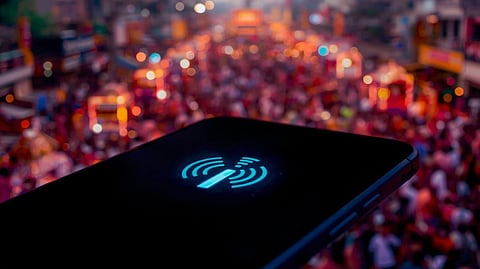

Many users believe that more signal bars on their phone mean better call quality. In reality, signal bars reflect only the strength of the connection to the nearest cell tower, not factors like network congestion or call clarity. This article unpacks the myth, explains the technical nuances behind signal indicators, and guides Indian users on what really affects call quality and how to improve it.
In India’s rapidly growing mobile landscape, the sight of signal bars on smartphones often becomes the shorthand for network quality. The more bars you see, the better your call quality must be, right? This is a prevalent myth that many Indian users still believe, but it oversimplifies the complex dynamics of mobile communication.
Signal bars on your phone represent the strength of the radio signal between your device and the nearest cellular tower. This is just one piece of the puzzle that determines call quality. While a strong signal is necessary for a stable connection, it does not guarantee clear voice calls or uninterrupted data streaming.
Firstly, signal bars measure signal strength but not network congestion. Imagine a busy marketplace: even if you're standing near a loudspeaker (strong signal), if the place is crowded (network congestion), your message might still get jumbled up. Similarly, during peak hours or in densely populated areas—like metro stations or festivals—many users connect to the same tower, causing congestion. This can degrade call quality, leading to dropped calls or choppy voice, even if your phone shows full bars.
Secondly, signal bars do not account for interference or the quality of the cellular infrastructure. Physical barriers such as thick walls, underground locations, or dense urban environments can disrupt the signal quality despite showing decent bars. Additionally, the technology used by the network, such as 3G, 4G, or 5G, impacts the call and data experience. For example, 5G networks offer higher bandwidth and lower latency, improving call clarity and data speed even with moderate signal bars.
Moreover, your phone’s hardware and software optimization play a role. A smartphone with advanced antenna design and software can maintain better call quality in challenging environments. For instance, flagship models from popular brands like Samsung or OnePlus employ sophisticated signal processing techniques to enhance call stability.
So, what should Indian consumers focus on instead? Firstly, look beyond signal bars and test real-world call quality by making test calls or checking data speeds using apps like Ookla Speedtest. Secondly, consider network coverage maps and user reviews for your area before choosing a carrier. Also, keep your phone’s software updated to benefit from performance improvements.
For users frequently facing poor call quality, investing in signal boosters or femtocells can be a practical solution. These devices amplify existing signals within homes or offices, ensuring clearer calls even when bars appear low. For example, a rural household with weak outdoor signals can use a signal booster to enhance indoor connectivity, improving voice and data services.
In conclusion, while signal bars give an initial indication of connectivity, they do not tell the whole story about call quality. Understanding factors like network congestion, infrastructure, and device capabilities can help Indian users make informed choices and improve their mobile experience. Remember, the next time you see full bars, don’t assume a flawless call—quality depends on much more beneath the surface.
